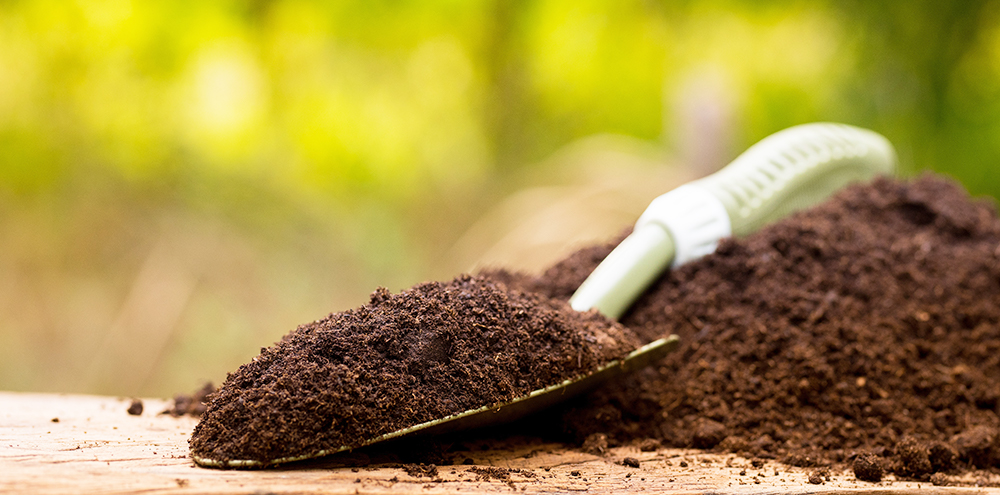
This can be a tough month for gardeners who want to be outside digging in the dirt but know it’s too early in the season to grow much of anything. Luckily, there is something that can — and should — be grown right now and for months and years to come: soil.
Can soil be grown? Definitely, because soil is a living entity that can be generated and regenerated. Should we grow soil? Absolutely, because we need soil, and it needs us. But why should we care so much about dirty old dirt? Because we’re not talking about dirt — we’re talking about a complex, interconnected natural resource that is critical to our existence.
Soil, which forms the crust of our planet, exists in layers (or horizons), each of which provides its own unique ecosystem functions. The uppermost layer (topsoil) is the soil we want to grow because it is teeming with life. In that layer is an amalgamation of minerals, gasses, liquids, organic matter and living creatures (micro-organisms, worms, insects and small mammals) that work together to create and sustain one another and other life on Earth.
Dirt, on the other hand (or foot), is the residue of mineral components in soil, which are not teeming with life. In other words, by itself, dirt is dead. Add the other ingredients, though, and you have soil, which is very much alive.
Topsoil keeps us very much alive by providing essential life-supporting services. For example, soil sustains plant growth, from which we, directly or indirectly, get our food. Soil also provides habitat for other creatures that play their own parts in the food chain and in ecological balance. In addition, soil has engineering functions that clean, capture and store water and clean our air and atmosphere.
Though humankind has long appreciated the importance of soil and tried to protect it from erosion and degradation, more than half of the world’s topsoil has been lost during the past 150 years, and we continue to lose it at a rate of 36 billion tons per year globally. Just as we lose it, we need it even more to feed growing world populations but also to mitigate climate change. That’s because well-managed, healthy soils can capture (sequester) carbon and decrease greenhouse gas emissions, which are driving the rapid advance of climate change.
Conversely, poorly managed and depleted soils release carbon into the atmosphere (as carbon dioxide, or CO2), which contributes to climate change.
So, yes, we should grow soil, and we can do that in our very own yards and gardens. Here are a few simple ways to get started.
- Keep soil covered, either with plants or mulches, to stop erosion and start building soil quality.
- Disturb the least amount of soil possible by using minimum- or no-till practices and by planting perennials, including fruits and vegetables, rather than annuals, whenever possible.
- Increase biodiversity by planting native species, rotating annual species and breaking up large areas of monocultured crops (including lawns).
- Minimize soil compaction by reducing foot and vehicular traffic wherever possible and avoiding working soil when it’s wet.
- Build soil and improve soil quality by amending soil with organic matter (compost, for example) and planting legumes and other soil-building plants.
- Test soil to determine its nutritional profile and needs, especially before adding fertilizers.
These are just a few ideas on growing soil, an undertaking supported by a diverse array of organizations ranging from the United Nation’s Food and Agriculture Organization, USDA’s Natural Resources Conservation Service, the Environmental Protection Agency to the Union of Concerned Scientists, Green America and Kiss the Ground.
To learn more, contact any (or all) of the organizations above, or search the Web using keywords such as “garden soil restoration,” “regenerative farming” and “green gardening.” Before long, you’ll be well on your way to growing soil, the most important crop for you and for the planet.
December tips
Prune small limbs and suckers from trees and shrubs but avoid heavy pruning until winter.
Clean fallen limbs, dead fruit and emerging weeds from garden beds, orchards and landscape areas.
Add mulch (1-2 inches deep) around tender plants and newly planted shrubs, trees and vines.
Plant shrubs, trees, spring-flowering bulbs and flowers.
Get a soil test and apply recommended soil amendments.
Clean and store garden tools and equipment.Review garden notes and new seed and plant catalogues.




